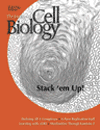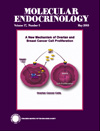PRAT Fact Sheet - Attachment 6
PRAT Fact Sheet - Attachment 6.doc.doc
Application for the Pharmacology Research Associate Program
PRAT Fact Sheet - Attachment 6
OMB: 0925-0378
Pharmacology Research Associate (PRAT) Program Articles about PRAT
Program The PRAT Program is a competitive postdoctoral fellowship program to pursue research in one of the laboratories of the National Institutes of Health (NIH) or the Food and Drug Administration (FDA). It is intended for individuals with backgrounds in the basic or clinical sciences who wish to obtain advanced experience in an area of pharmacology, or for those with a pharmacology background to gain experience in new fields. Research Research opportunities in pharmacology are broadly defined and can include, for example, molecular pharmacology, biochemistry, signal transduction mechanisms, drug metabolism, immunopharmacology, chemistry and drug design, endocrinology, cell biology, structural biology, neuroscience, gene therapy, or clinical pharmacology. Applicants Applicants must have received a Ph.D. or a professional degree (M.D., D.D.S, D.O., D.V.M., or Pharm.D.) in a basic or clinical science within the last five years, and they must be citizens or permanent residents of the U.S. Applicants may apply prior to coming to NIH or FDA, or they may have started postdoctoral research at NIH or FDA within the 12-month period prior to the application receipt deadline. Preceptors Applicants select a preceptor in advance. Preceptors are scientists at the NIH or FDA who have an interest in training fellows through this program, and who will indicate their commitment through formal submission of their credentials at the time of application. Eligible preceptors and descriptions of their research are available at the NIH world wide web site http://www.training.nih.gov/postdoctoral/search.asp and then search the NIH CRISP database. Application The application process involves submission of the completed PRAT application form, which includes a brief research plan and short statement of relevance to pharmacology, the signed preceptor selection form, letters of recommendation, official graduate and undergraduate transcripts, and curricula vitae for both the applicant and the preceptor. Please
read the Privacy
Notice Act
before downloading these documents. Location Most research facilities are located in a beautiful, campus-like setting in Bethesda, Maryland. Other research facilities are located in Baltimore, Maryland; Frederick, Maryland; and Research Triangle Park, North Carolina. Appointment Appointments are made at competitive salary levels commensurate with other fellowship opportunities at the NIH. In addition, there is a monthly supplies allowance and an annual travel allowance. Individuals with professional degrees are eligible to become commissioned officers in the Public Health Service. Timetable
* PRAT Fellowships are three-year appointments beginning in Fall of each year; however, earlier start dates though other mechanisms may be negotiated individually by the fellow with the preceptor and the host laboratory. For further information, or for an application kit, contact: PRAT
Program Assistant |
Related Information Clinical Pharmacology Research Training Opportunities Papers by PRAT fellows:
Snapp
EL, Hegde RS, Francolini M, Lombardo F, Colombo S, Pedrazzini E,
Borgese N, Lippincott-Schwartz J. Formation
of stacked ER cisternae by low affinity protein interactions.
The Journal of Cell Biology 2003 Oct 27;163(2):257-69. Cover
reproduced by copyright permission of the Rockefeller University
Press.
Julie
M. Hall and Kenneth S. Korach. 2003. Stromal
Cell-Derived Factor 1. a Novel Target of Estrogen Receptor Action,
Mediates the Mitogenic Effects of Estradiol in Ovarian and Breast
Cancer Cells.
Molecular Endocrinology 17(5), pp. 792-803. Copyright 2003 by the
Endocrine Society.
Julie
M. Hall, Donald P. McDonnell, and Kenneth S. Korach. 2002.
Allosteric
Regulation of Estrogen Receptor Structure, Function, and
Coactivator Recruitment by Different Estrogen Response Elements.
Molecular Endocrinology 16(3), pp. 469-486. Copyright 2002 by the
Endocrine Society. Kristi A. Egland, Vasantha Kumar, Paul Duray and Ira Pastan. Characterization of overlapping XAGE-1 transcripts encoding a cancer testis antigen expressed in lung, breast, and other types of cancers. Molecular Cancer Therapeutics 2002 May;1(7):441-50. |
![]() Print
this page
Print
this page
![]() E-mail
this page
E-mail
this page
This page last updated May 2, 2007
| File Type | application/msword |
| File Title | Pharmacology Research Associate (PRAT) Program |
| Author | okitar |
| Last Modified By | okitar |
| File Modified | 2007-05-14 |
| File Created | 2007-05-14 |
© 2025 OMB.report | Privacy Policy



